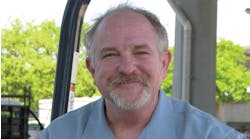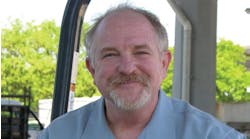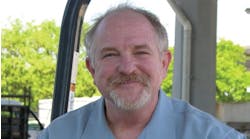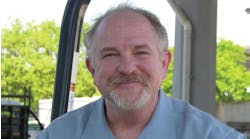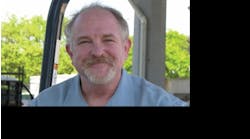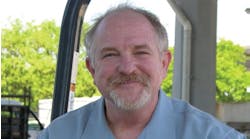I had the opportunity a couple of weeks ago to go to Sweden and visit some Volvo Construction Equipment facilities. One of the highlights was getting a chance to operate Volvo wheel loaders with their fuel-saving OptiShift feature (for more information about the OptiShift, read April RER's “Earthmoving's New Front-Tier”, which you can access online at http://rermag.com/trends_analysis/interviews/rer-interviews-earthmoving-equipment-manufacturers-20100401.
First of all, you have to like a machine that offers a 15-percent fuel savings, which Volvo says will be achieved on its L150F, L180F and L220F wheel loaders. The OptiShift includes a new torque converter with Lock Up and free wheel stator, and its patented Reverse by Braking functionality.
Now, I don't claim to be an expert when it comes to operating wheel loaders, and if I ever were to give up journalism, I don't think my next career will be as a wheel-loader operator, not if the contractor I'd work for would want to finish his job on schedule. I've watched enough good operators at work to know how far I am from real efficiency. That said, I do recognize efficient technology when I see it and feel it and I was very impressed by the way OptiShift works, and it can reduce fuel consumption in operations such as load and carry and applications such as rehandling and timber handling, as well as short-cycle loading.
The Reverse by Braking function makes the machine operate with remarkable smoothness. In short-cycle loading, it is common to use the gear shifter to change between reverse and forward without applying the brakes, with deceleration handled by the torque converter. This method is less efficient than using the brakes — it results in energy loss and puts extra strain on the torque converter. Volvo's RBB system uses the standard service brakes rather than the torque converter.
But the operator has to do almost nothing. The operator switches from forward to reverse using the shifter, and the RBB system recognizes the speed, direction and throttle position and applies the service brake to slow the machine. This provides a smoother deceleration and direction change. It reduces wear and tear on the torque converter, saving fuel in the process. What was amazing to me, sitting in the operator's chair, was how smooth the unit handled, with none of the herky-jerky motion a relatively unskilled operator normally experiences.
One of the more experienced operators I spoke with said he had the same feeling, and that the unit was just ergonomically comfortable, with much less stress on the back, the kind of discomfort that can reduce efficiency and cut into productivity.
It's a technology well worth checking out.
